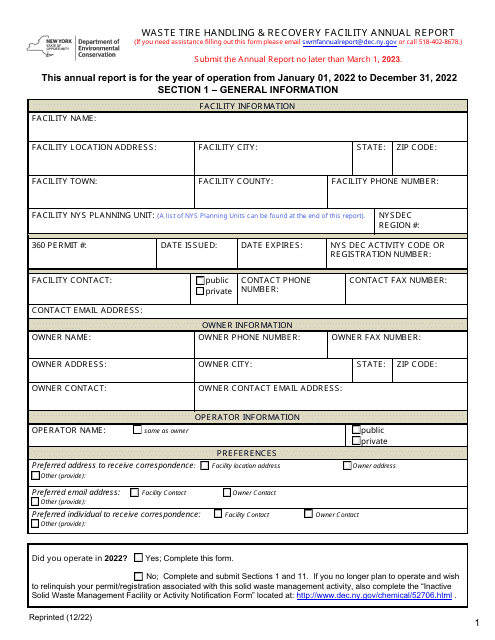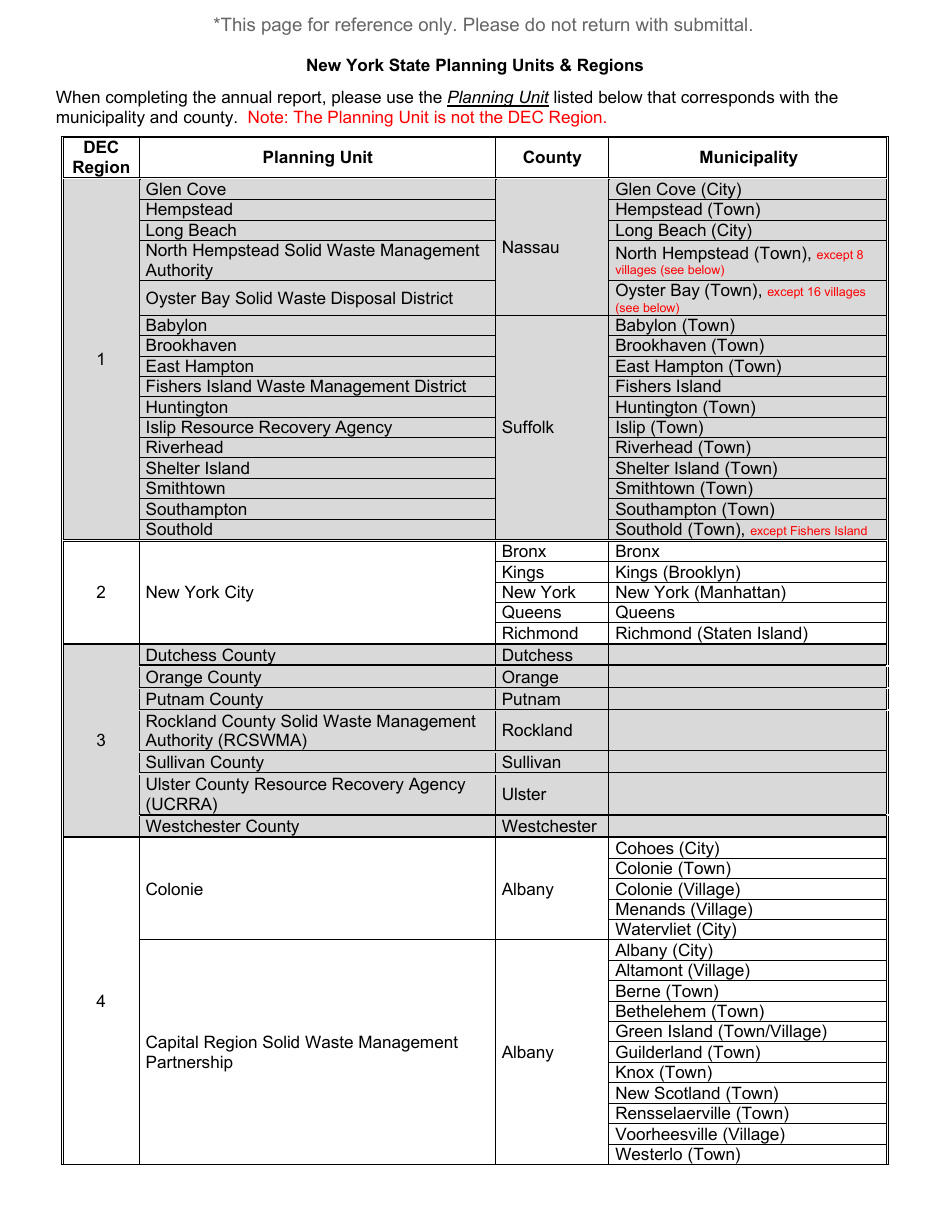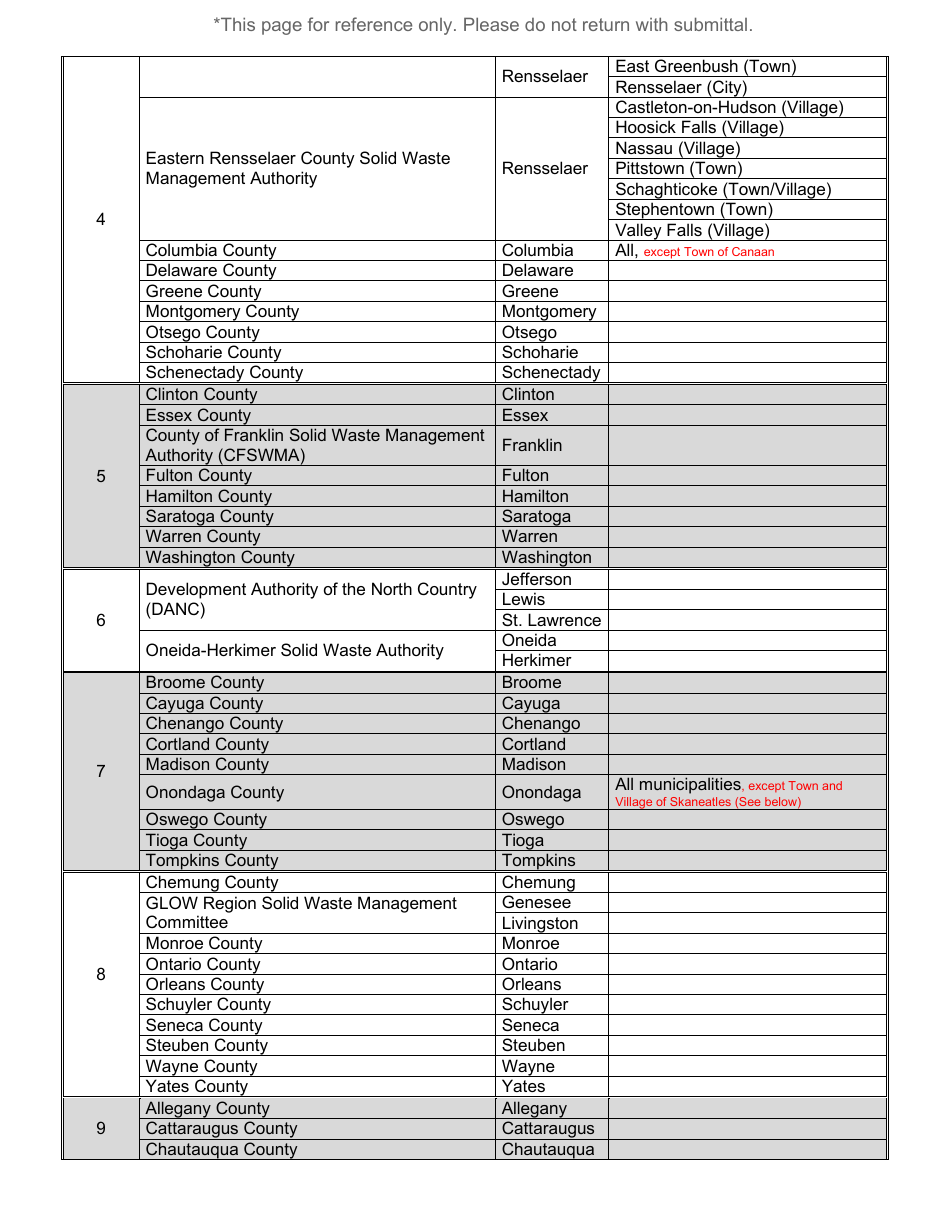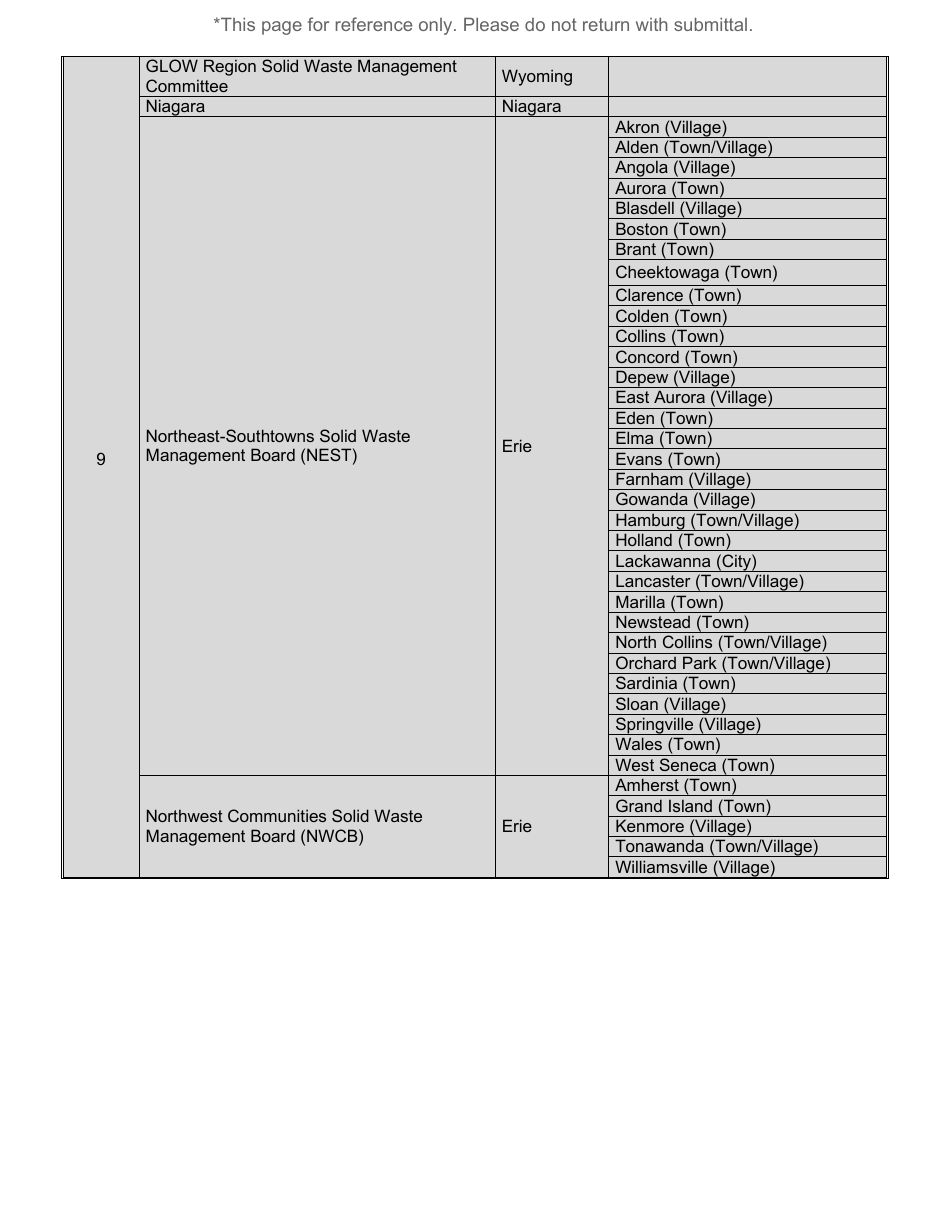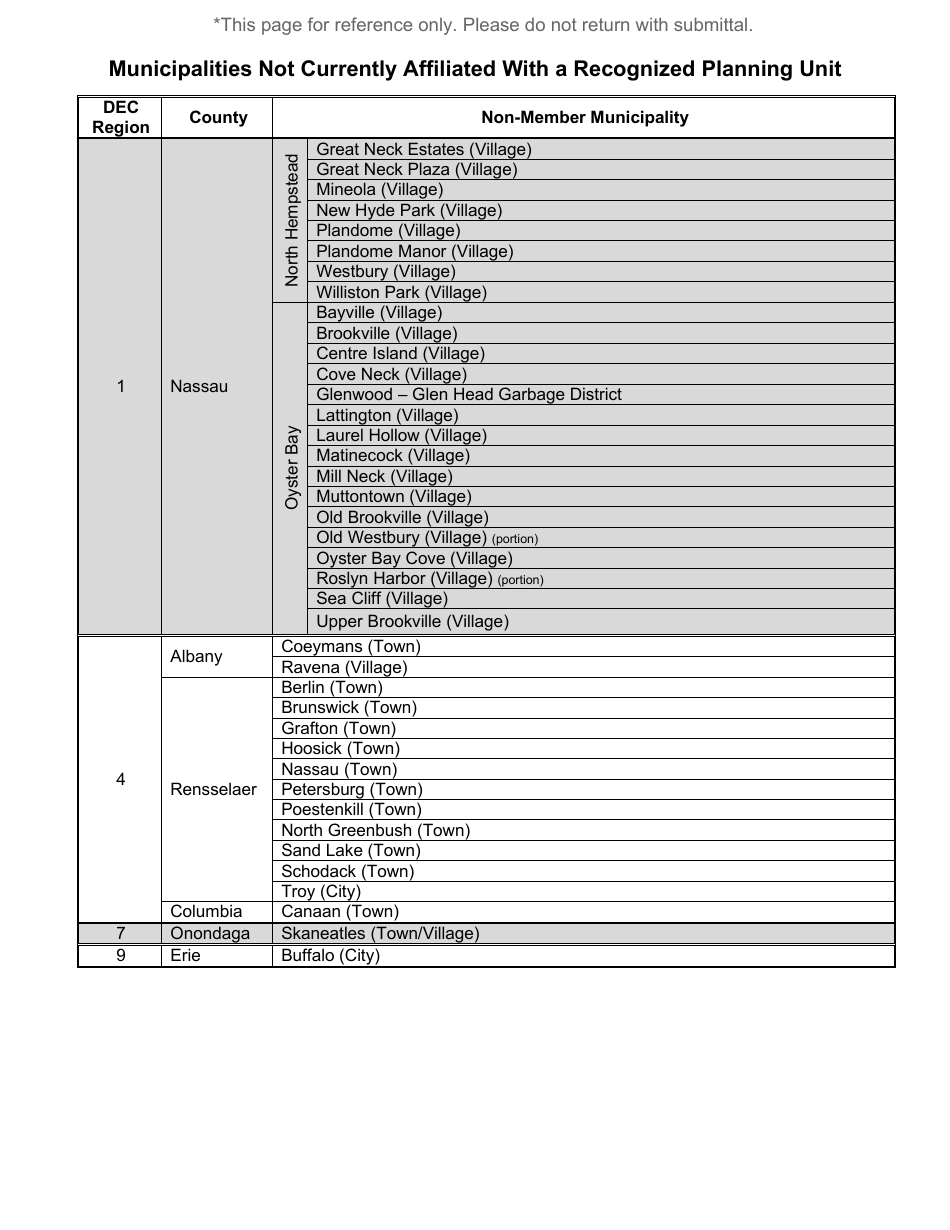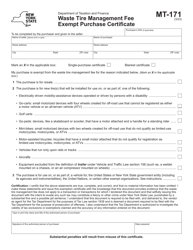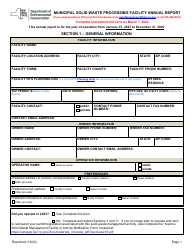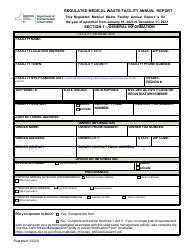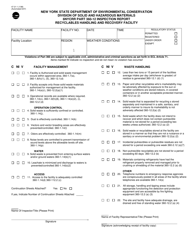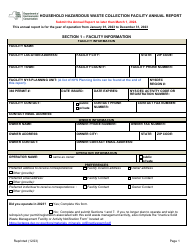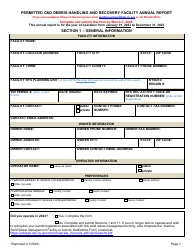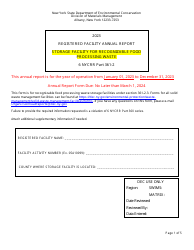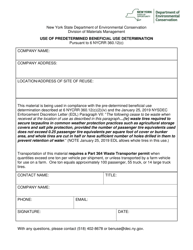This version of the form is not currently in use and is provided for reference only. Download this version of
the document
for the current year.
Waste Tire Handling & Recovery Facility Annual Report - New York
Waste Tire Handling & Recovery Facility Annual Report is a legal document that was released by the New York State Department of Environmental Conservation - a government authority operating within New York.
FAQ
Q: What is the Waste Tire Handling & Recovery Facility Annual Report?
A: The Waste Tire Handling & Recovery Facility Annual Report is a report that provides information about the handling and recovery of waste tires in New York.
Q: Why is the Waste Tire Handling & Recovery Facility Annual Report important?
A: The report is important to track and assess the management of waste tires in New York, ensuring that proper procedures are followed to protect the environment and public health.
Q: What does the report contain?
A: The report contains information about the amount of waste tires handled and recovered, as well as the methods employed for recycling or disposal.
Q: Who is responsible for submitting the report?
A: Waste Tire Handling & Recovery Facilities in New York are responsible for submitting the annual report.
Q: How is the data collected for the report?
A: Waste Tire Handling & Recovery Facilities report their data to the New York Department of Environmental Conservation (DEC), which is responsible for overseeing waste management activities.
Q: What is done with the information in the report?
A: The DEC uses the information to monitor compliance with waste tire management regulations, identify areas for improvement, and develop strategies to reduce the environmental impact of waste tires.
Q: Are there any penalties for non-compliance?
A: Yes, Waste Tire Handling & Recovery Facilities that fail to submit the annual report or comply with regulations may be subject to enforcement actions and penalties.
Form Details:
- Released on December 1, 2022;
- The latest edition currently provided by the New York State Department of Environmental Conservation;
- Ready to use and print;
- Easy to customize;
- Compatible with most PDF-viewing applications;
- Fill out the form in our online filing application.
Download a fillable version of the form by clicking the link below or browse more documents and templates provided by the New York State Department of Environmental Conservation.
